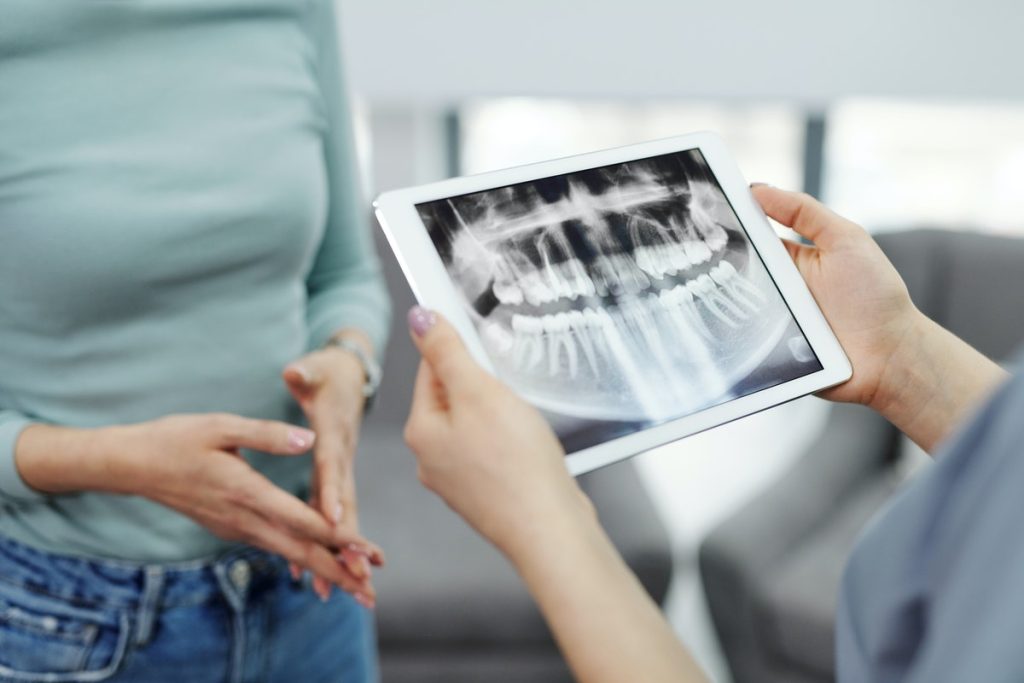The musculoskeletal system is the system in the body that is responsible for movement. It includes the muscles, bones, and joints. The muscles are connected to the bones by tendons, and the joints are where the bones fuse.
The musculoskeletal system can be affected by various conditions, including Temporomandibular Joint Disorder (TMD), the most common disorder in the system. Here’s what you need to know about this disorder, its symptoms, comorbidities, and how to treat it.
What is TMD?
Temporomandibular Joint Disorder was a relatively recent term in the early 1970s. However, the disorder has been around for much longer than that and has been called by many different names over the years.
The earliest known reference to TMD is from the Ebers Papyrus, an ancient Egyptian medical text dating back to 1550 BC. The text mentions “a pain in the jaw joint“ and possible treatments.
In the 1800s, TMD was referred to as “lockjaw“ or “trismus“. This name was inspired by the disorder’s symptoms, which can include difficulty opening the mouth wide and locking the jaw.
In the early 1900s, TMD was renamed “dysfunction of mastication.“ This name reflected the belief at the time that TMD was a result of problems with chewing.
In the 1970s, TMD was renamed to its current name, Temporomandibular Joint Disorder. This name reflects that TMD is not a specific disease but a collection of symptoms that can have many different causes.

What Causes TMD?
The exact cause of TMD is still unknown, but there are several theories about what might contribute to the disorder.
One theory is that TMD is caused by problems with the muscles that control the jaw. These muscles, known as the masticatory muscles, can be strained or damaged, leading to pain and dysfunction.
Another theory is that problems with the temporomandibular joint cause TMD. It’s a hinge joint that connects the lower jaw (mandible) to the skull’s temporal bone. The joint allows the jaw to move up and down and side to side and acts as a shock absorber for chewing.
Problems with this joint can include joint inflammation (arthritis), misalignment of the bones, or damage to the cartilage that covers the joint.
A third theory is that TMD is caused by muscle and joint problems. It’s supported by the fact that many people with TMD have both muscle and joint symptoms.
What are the Symptoms of TMD?
The most common symptom of TMD is a pain in the jaw, face, and ear. The pain may be constant, or it may come and go. It may be mild or severe and get worse with chewing or another jaw movement.
Other common symptoms of TMD include:
- Jaw clicking or popping
- Jaw locking
- Difficulty opening or closing the mouth
- Pain when yawning
- Headaches
- Ear pain
All of these symptoms may be present to be diagnosed with TMD. However, about four or five of these symptoms are also enough to get diagnosed with the disorder.
Comorbidities
Because of its TMD’s proximity to the mouth, most comorbidities of the disorder are related to dental problems. For example, one known comorbidity is chronic periodontitis and tooth loss.
Chronic Periodontitis and Tooth Loss
These two dental problems almost go together, and they are some of the most common comorbidities of TMD.
A recent study has found that chronic periodontitis and tooth loss can lead to TMD. A simple explanation is that people with chronic periodontitis want to avoid gums that are highly inflamed, which can lead to awkward chewing. Unfortunately, it will eventually lead to TMD when it’s done after a prolonged period.
Thankfully there are treatments for this comorbidity. One solution to deal with this is a dental implant in regions that have exposed and inflamed gums. Once the treatment is done, the person can chew normally, drastically reducing the chances of TMD.
TMD Treatments
There are many treatments for TMD, and the best treatment for each person will depend on the individual’s symptoms and the disorder’s underlying cause.
Some common treatments for TMD include:
-
Muscle Relaxants:
These medications can help relax the masticatory muscles and relieve pain.
-
Nonsteroidal Anti-inflammatory Drugs (NSAIDs)
These medications can help to reduce inflammation and relieve pain.
-
Tricyclic Antidepressants:
These medications can help relax the masticatory muscles and relieve pain. They may also be effective in treating associated depression.
TMD is a disorder that can affect people’s overall lifestyle. While there isn’t a cure for TMD, there are treatments that can help relieve the symptoms. The best treatment for each person will depend on the individual’s symptoms and the disorder’s underlying cause. Once you get treated, your body will start forgetting the pain of TMD. It will then help you live a better life.






